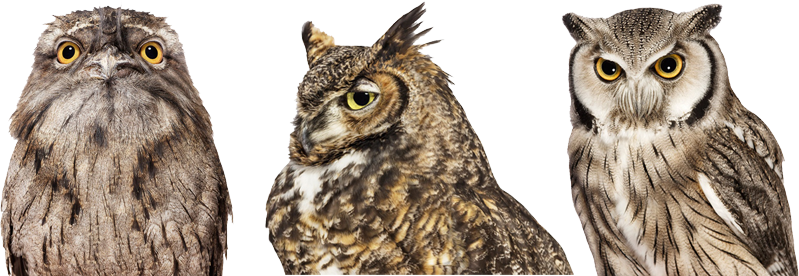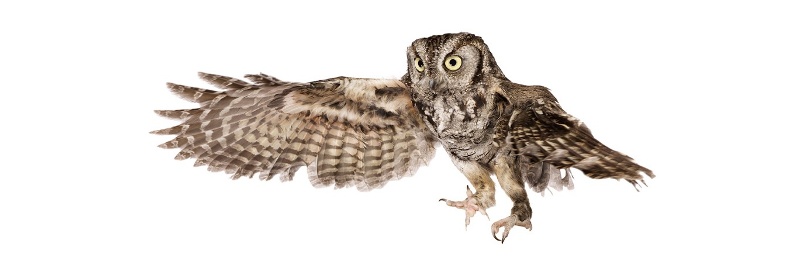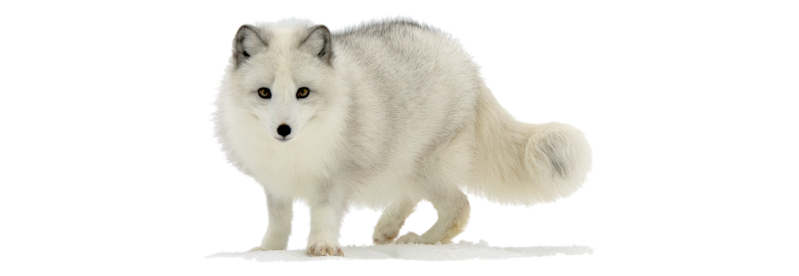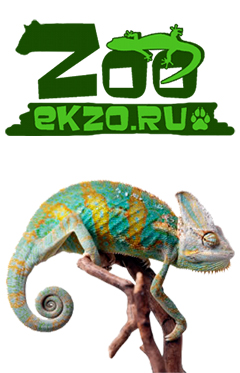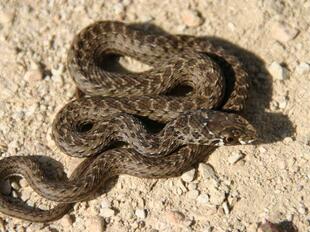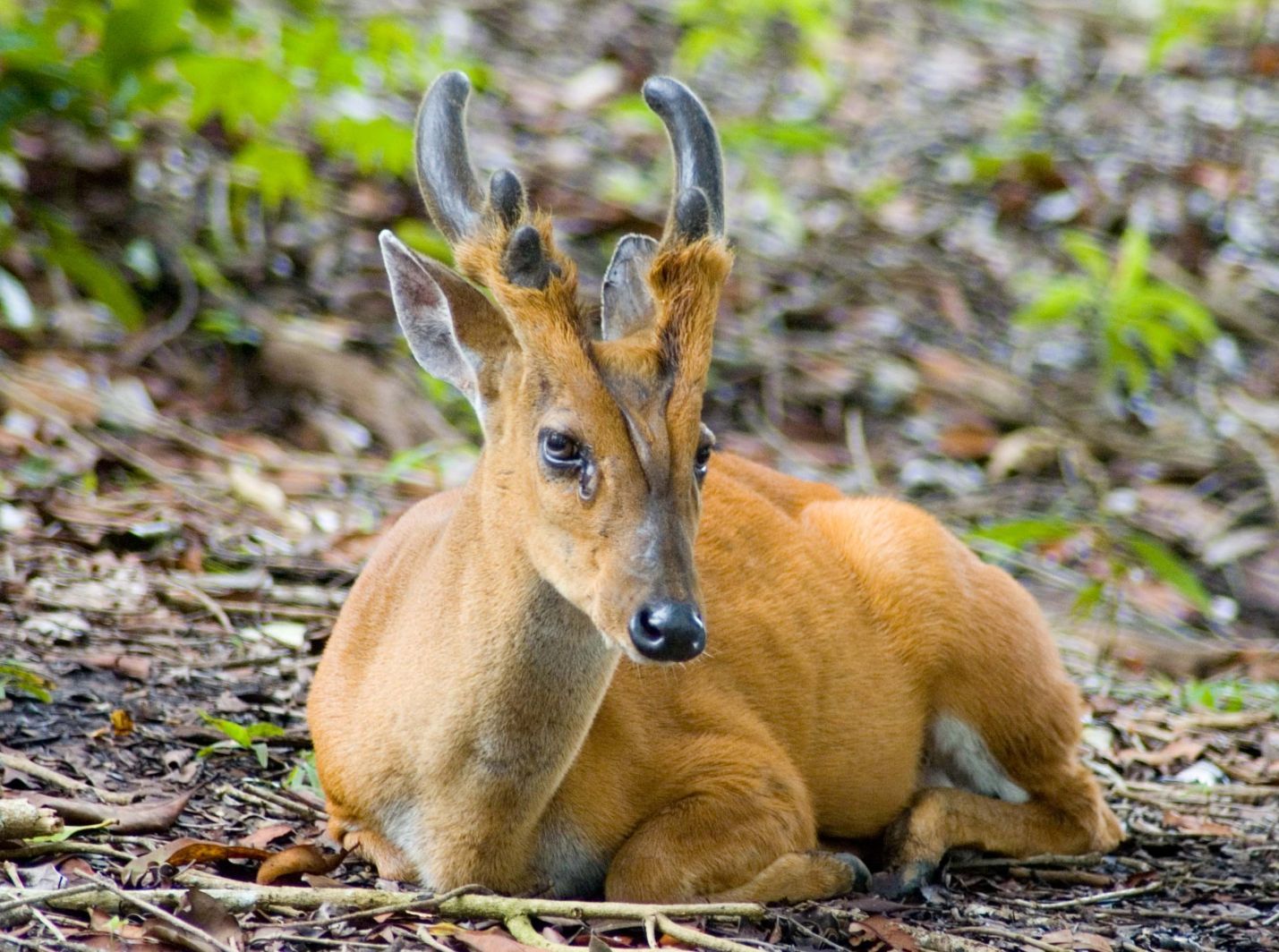
Indian muntjack, or barking deer(Muntiacus muntjak)
Phylum —chordata
Class — mammalia
Order — artiodactyla
Family — cervidae
Genus – muntiacus
Appearance
The Indian muntjac has a short but very soft, thick, dense coat that is more dense in cooler regions. Its face is darker and the limbs are dark to reddish brown and the coat color seasonally varies from darker brown to yellowish and grayish brown and is white ventrally. Its ears have much less hair, but otherwise are the same color as the rest of the head.
Male muntjacs have short antlers, about 10 cm (3.9 in) long, that protrude from long body hair-covered pedicels above the eyes. Females have tufts of fur and small bony knobs instead of antlers. Males also have elongated (2–4 cm (0.79–1.57 in), slightly curved upper canines, which can be used in male-male conflicts and inflict serious injury.
The body length of muntjacs varies from 89–135 cm (35–53 in), and height ranges from 40–65 cm (16–26 in). The muntjacs have large, obvious facial (preorbital, in front of the eyes) scent glands used to mark territories or females. Males have larger glands than females.
Habitat
Indian muntjacs are found in southeastern and southern Asia, from Pakistan through India and Nepal, and across Southeast Asia into southern China.
Behavior
Wild Indian muntjacs are active both during the day and during the night. However, animals in captivity show crepuscular behavior. These deer are solitary grazers, though occasionally they form small herds numbering 4-5 individuals. They will patrol their territory, searching for food and mates. A female is often seen with her fawn, and their territory will overlap with several territories of surrounding males.
The males do not tend to be very aggressive, but they do like to maintain separate territories. Usually they tolerate other muntjacs, though fights can occur over a female. Males fight using their antlers and in doing so can cause each other serious injuries. The barking sound a barking deer makes is an alarm call to warn nearby muntjacs of a potential threat. Their calls can be regularly heard at dawn and dusk, and can be a means of communication as well. Females and fawns squeal when communicating with each other.
Diet
Indian muntjacs are omnivorous and eat herbs, fruit, birds' eggs, sprouts, seeds, grasses and small animals.
Reproduction
Indian muntjacs are polygynous animals, males often fight between one another for possession of a harem of females. Muntjacs don’t adhere to any particular breeding season and can breed year round. Gestation lasts for a period of up to 230 days (about 7-8 months). A single fawn is born, and, occasionally, twins. Fawns are born in dense vegetation, where they remain hidden until they can move about with their mother. Females stop lactating once their fawn is 7-8 weeks of age. They are able to breed again several days after giving birth, so a doe can produce a new baby every 7 months. The young leaves its mother after about 6 months to establish its own territory. A female reaches sexual maturity at about 7 to 9 months old, and males at about 11 to 12 months old.
Average lifespan 15-20 years.
In captivity
In captivity, muntjaks are not quite whimsical and can be kept both in a closed enclosure and in the open air. If the temperature is below zero, the muntjak should be moved to closed rooms. When designing a fence, it is necessary to remember that muntjaks are able to jump to a height several times higher than their own. It is better to build a closed-type aviary (warm aviary), which has an access to an open space surounded with a fence. The exit should be covered with curtains to keep warm. In such conditions, the deer will go out into the fresh air even in winter. In winter part of the enclosure (the house) is necessary to cover with the straw, which is muntjaks used as bedding for sleeping. The house must be regularly cleaned and the straw changed.
Muntjaks should always have free access to fresh drinking water. Next to the drinking bowl, you need to install a salt stone, as it is necessary to maintain the mineral balance of the deer.
The diet consists mainly of plant food, but muntjak will also eat bird eggs, small mammals or reptiles.
There are no problems with feeding of muntjaks. They are not whimsical and eat any vegetables and almost all other types of plants. If you have a garden, you can let them feed on grass and other plants.
 Russian
Russian
 English
English








